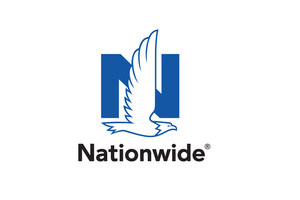COLUMBUS, Ohio, Dec. 9, 2020 /PRNewswire/ -- The U.S. housing market is facing a spike in mortgage delinquencies nearly as severe as in the depths of the Great Recession, a new report has found, but government intervention is keeping them from becoming foreclosures, thereby supporting the housing market.
Data from the latest Health of Housing Markets Report (HoHM Report) from Nationwide economics has found that mortgages delinquent 90 days or more are peaking in nearly all corners of the United States, reaching levels nearly as severe as experienced in 2010 during the housing bust. But thanks to government forbearance measures introduced earlier in the year that is keeping these delinquencies from becoming foreclosures, the housing market is stable with demand nearing all-time highs.
"The spike in mortgage delinquencies would normally have had a significantly negative impact, but delinquencies in the current environment should not be viewed as they have been in the past due to government policy changes," said Nationwide Senior Vice President and Chief Economist David Berson. "It seems the federal government learned a valuable lesson from the Great Recession, realizing that massive and timely forbearance policies were necessary. As a result, many of these loans have not slipped into foreclosure."
With expectations that forbearance options will be extended further under the incoming Biden administration, the national Leading Index of Healthy Housing Markets (LIHHM) is little changed, remaining in modestly positive territory.
The HoHM report is a quarterly measure of the health of the U.S. housing market using the LIHHM, a proprietary, data-driven view of the near-term performance of housing markets for the nation as a whole and for 400 metropolitan statistical areas (MSAs) and divisions. For each MSA, the LIHHM uses local-level data to incorporate the unique characteristics of regional housing markets, including employment, demographics, the mortgage market and house prices. The focus of the LIHHM is on the entire housing market's health, rather than a projection of house prices or home sales.
Mixed factors act as brake on recovery
While the fourth quarter HoHM report finds the LIHMM remains in positive territory after adjusting for government intervention measures, the report also reveals that the overall health of the housing market is still being weighed down by a mix of factors, chief among them the still recovering job market.
According to the U.S. Bureau of Labor Statistics, while November marked the seventh consecutive month of job growth for the U.S. economy, employment remains more than 10 million jobs in the hole compared with the peak prior to the start of the COVID-19 recession in February. Moreover, the national unemployment rate – despite having fallen sharply – is still at recession levels.
Meanwhile, house price gains are accelerating in response to a persistent imbalance between supply and demand in the market. Throughout much of 2020, mortgage rates have remained historically low. Combined with a shift in housing preferences for "space" as many workers can work remotely and rapidly increasing levels of employment as the economy heals from the downturn, the report finds that housing prices have been rising rapidly nationwide.
"Home price appreciation has accelerated in many local markets in response to the extremely tight supply of homes," Berson said. "Even with low mortgage rates, which we expect will remain near record lows for the foreseeable future, rapidly rising prices are a risk for housing affordability, especially if inventory levels remain as low as expected."
The HoHM report finds that areas hardest hit by this have been Texas and parts of the Pacific Coast. Metro markets that have the least positive LIHHM outlooks are: San Angelo, Texas; Cheyenne, Wyo.; Odessa, Texas; Clarksville, Tenn.; Brownsville-Harlingen, Texas; Fort Worth-Arlington, Texas; Kennewick-Richland, Wash.; State College, Penn.; Manhattan, Kan.; and San Rafael, Calif.
By contrast, metropolitan regions where home prices have remained more stable, such as in the Midwest, are showing positive or neutral rankings. For the fourth quarter, metropolitan areas with the highest LIHHM rankings are, in order: Saginaw, Mich.; Johnstown, Penn.; St. Joseph, Mo.; Tuscaloosa, Ala.; Alexandria, La.; Detroit, Mich.; Wheeling, W.Va.; Gape Girardeau, Mo.; Flint, Mich.; and Altoona, Penn.
More information about the HoHM Report, including the methodology used, can be found at blog.nationwide.com/housing. The HoHM Report is released on a quarterly basis online and in print.
About Nationwide
Nationwide, a Fortune 100 company based in Columbus, Ohio, is one of the largest and strongest diversified insurance and financial services organizations in the United States. Nationwide is rated A+ by both A.M. Best and Standard & Poor's. An industry leader in driving customer-focused innovation, Nationwide provides a full range of insurance and financial services products including auto, business, homeowners, farm and life insurance; public and private sector retirement plans, annuities and mutual funds; excess & surplus, specialty and surety; pet, motorcycle and boat insurance. For more information, visit www.nationwide.com. Follow us on Facebook and Twitter.
Nationwide, Nationwide is on your side and the Nationwide N and Eagle are service marks of Nationwide Mutual Insurance Company. © 2020
NFM-20410AO
Contact:
Kevin Kemper
(614) 249-6349
[email protected]
SOURCE Nationwide

Related Links
WANT YOUR COMPANY'S NEWS FEATURED ON PRNEWSWIRE.COM?
Newsrooms &
Influencers
Digital Media
Outlets
Journalists
Opted In





Share this article